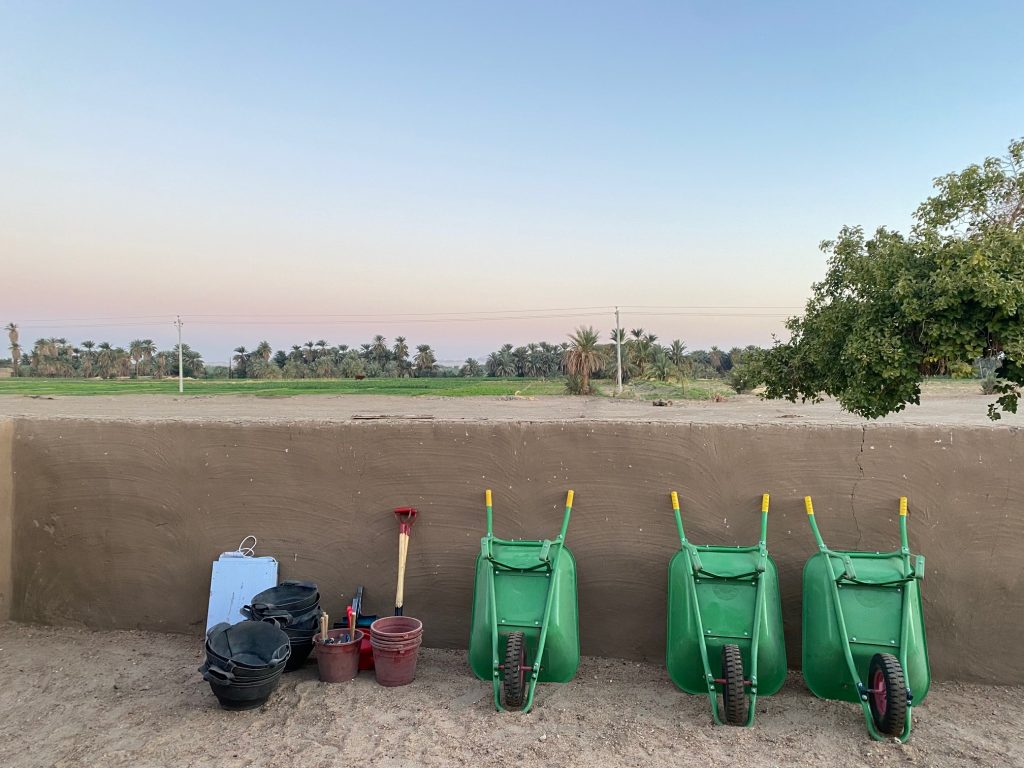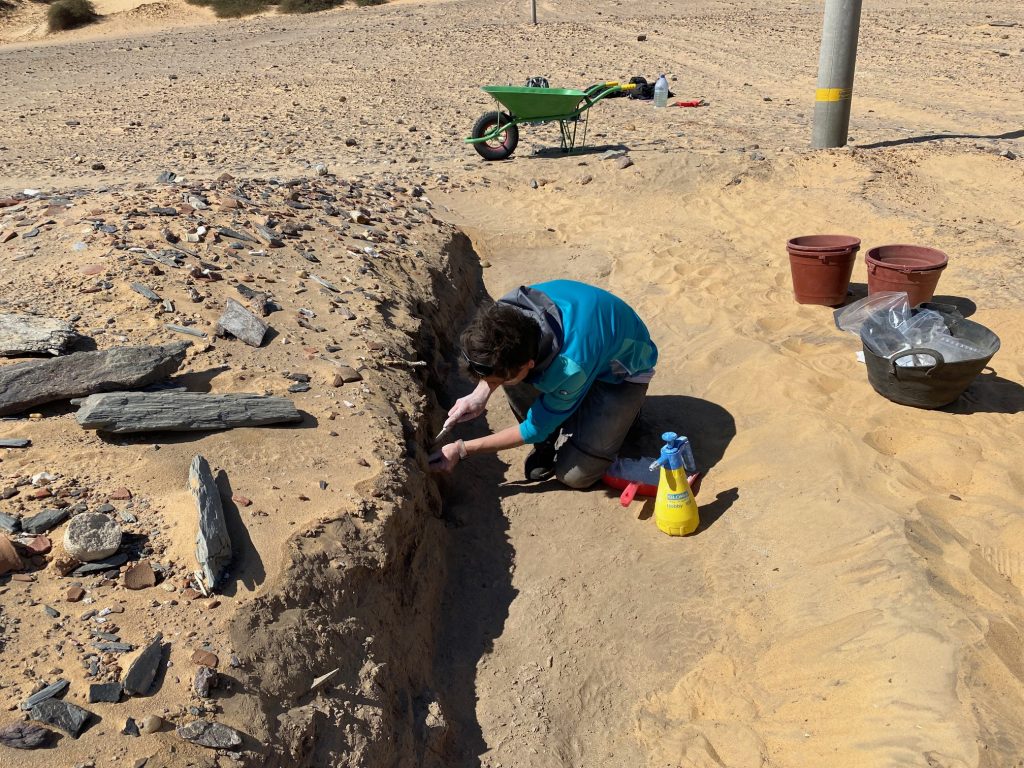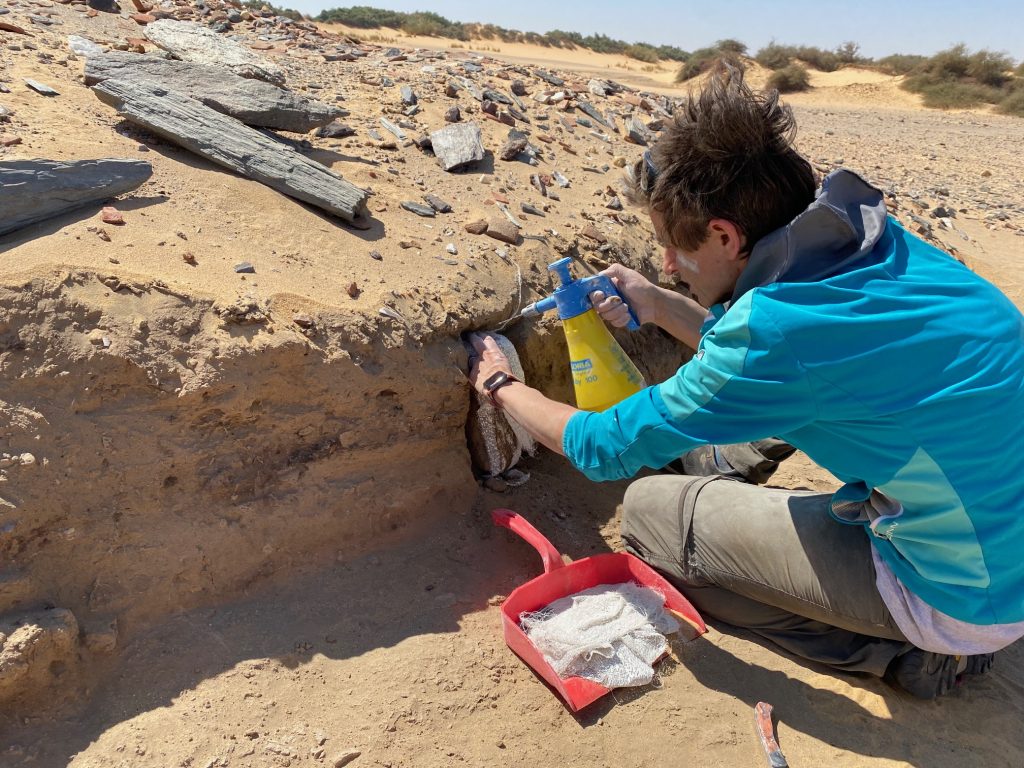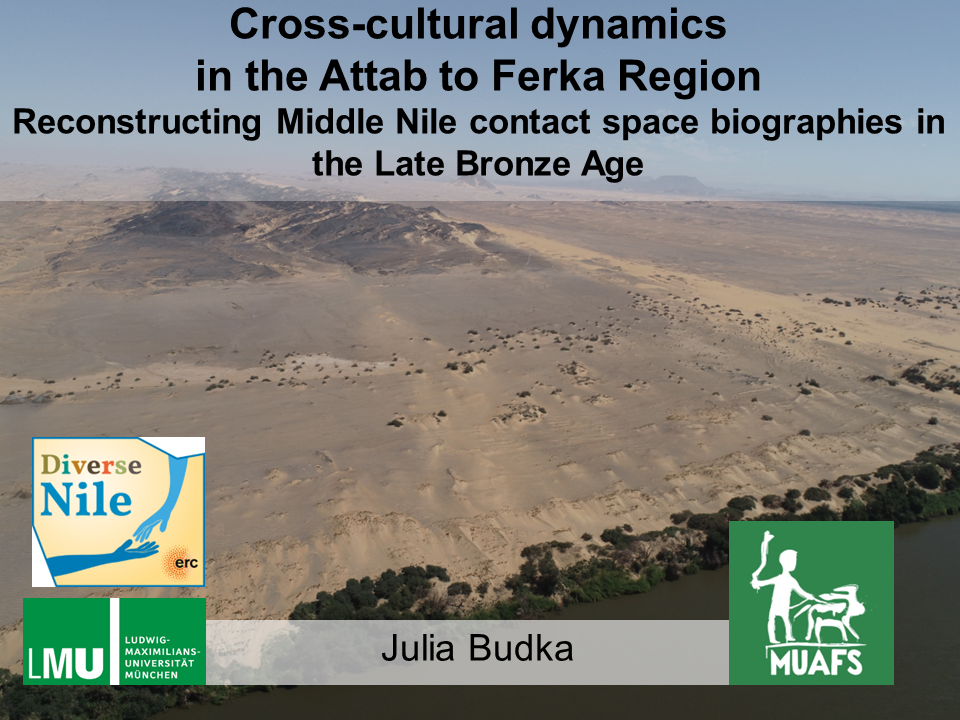It has been a busy week – arriving in Khartoum, finishing the paperwork, travelling to the north, arriving in Ginis, settling in our digging house, sorting the material and equipment and organizing the gang of workmen for our excavations as well as the boat transport to the west bank. All went very smoothly thanks to great support from our Sudanese friends and colleagues, especially the help of our inspector Huda, our friends Waleed in Khartoum and Magzoub here in Abri as well as our driver Imad and cook Ali.

We will start with extended excavation in the small settlement AtW 001 – in 2022, a first test trench provided interesting results, suggesting that there was a use at the site from Classic Kerma times through the Thutmoside period (for details see Budka 2022).
We managed to prepare everything for our first day of excavation tomorrow: Chloe and Sofia set up the new grid and took all necessary measurements, I was busy with taking micromorphological soil samples from the section of our 2022 trench – Huda was a great help here, not only in taking working pictures.


It was the first time I took these samples using plaster of paris, quick-setting gypsum plaster – and although the sediment is partly very soft and challenging to sample, it worked really well. We hope that the analysis of these samples will allow us a more detailed understanding whether our excavated area was an open space or a roofed space, what kind of activities apart from the visible fire places and the dumping of food waste are traceable and much more! Very exciting, especially since we did not yet find standing architecture although loose mud bricks are present at the site.
Today is our day off and tomorrow we will start week 1 of excavations at AtW 001 with our local workmen – stay tuned, this site is really full of potential!
Reference
Budka 2022 = J. Budka, Early New Kingdom settlement activities in the periphery of Sai Island: towards a contextualisation of fresh evidence from Attab West, MittSAG – Der Antike Sudan 33, 2022, 45‒61.

